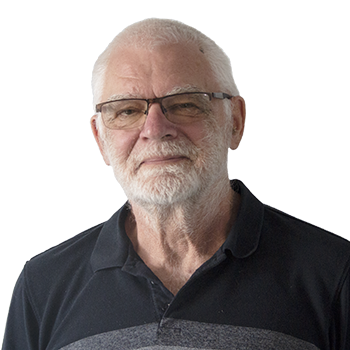I drove to the nursing home to visit a dear old friend. She was sleeping when I entered her room, so I pulled up a chair to wait.
Waiting would not be a chore. As I gazed at her profile, relaxed in sleep, I explored memories of our friendship over several years. My friend had some hard chapters in her story, and those chapters were increasing with age and deteriorating health. And yet, an important line of defence was a robust and earthy sense of humour that sometimes left tears of laughter on my cheek.
My reverie was interrupted by a soft voice. A staff person was leaning into the room. “While you’re waiting, would you like to talk to “Jane?” She doesn’t get many visitors.” As we crossed the hall, I was informed, “Jane is blind.”
Sight and visitor limitations aside, Jane did not live in a dark and secluded place. She was delighted with having company. We quickly and honestly touched on important parts of her story, her family, her passions, and her loneliness.
Suddenly, Jane turned a face toward me that was as radiant as I’ve always pictured Christ on the mountain top. And her words were, “Do you know what happened today? I think I saw yellow!” She hurried on to say that when the care aide had come by that morning to help her into her clothes, she had sensed a colour before her face. She had asked, “Are you wearing yellow?” It was affirmed, it was a yellow uniform. Jane added, with obvious emotion in her face, “It has been a very long time since I’ve seen yellow!”
It was a holy moment. When the experience is that powerful, that emotional, that real, it becomes about hope. It becomes about a reason to live with joy and passion. It becomes a reason to look forward to the coming day.
The church has not done a good job of pointing, of opening eyes, of offering blessings in situations like Jane and her glimpse of yellow. We have held back from naming spontaneous moments of joy, of excitement, as events of spiritual significance. We have hesitated to point to lives healed, struggles conquered, delightful moments of colour, as steps on a holy path. The church has typically insisted on some version of “holy” language.
And yet, sitting in Jane’s presence, gazing into her face, hearing her voice, sharing her emotion, that was about the greatness of God.
We are created in the image of God. In that simple and yet deeply complex notion, I find the stuff that makes my life good, my spirit soar. Every person to whom I have offered the dignity of respect, every person has returned something of that holy heritage. A corollary would then be that when I have not experienced that glimpse of God from another, it is connected to my own withholding of respect and dignity.
We of the church have not produced language or theology to point in that direction. We have largely assumed that when God is glimpsed, that glimpse will be generated and identified by the “formal” people of God.
Can “the people of God” hold a more inclusive identity? Can the people of God be those referred to in Genesis 1:26? Can the people of God include my friend in the truck driving world, who insists that the church would combust if he stepped in the door? Can it include the street person, who visits me in the church, shares stories? Can it be the young woman who falls asleep in the church washroom floor while escaping her abuser? Can the old woman at the food bank, the woman who points out at the hoar frost covered trees in delight, can that woman be the incarnate God? I hope so. Because, like Jane, I want my face to shine.


